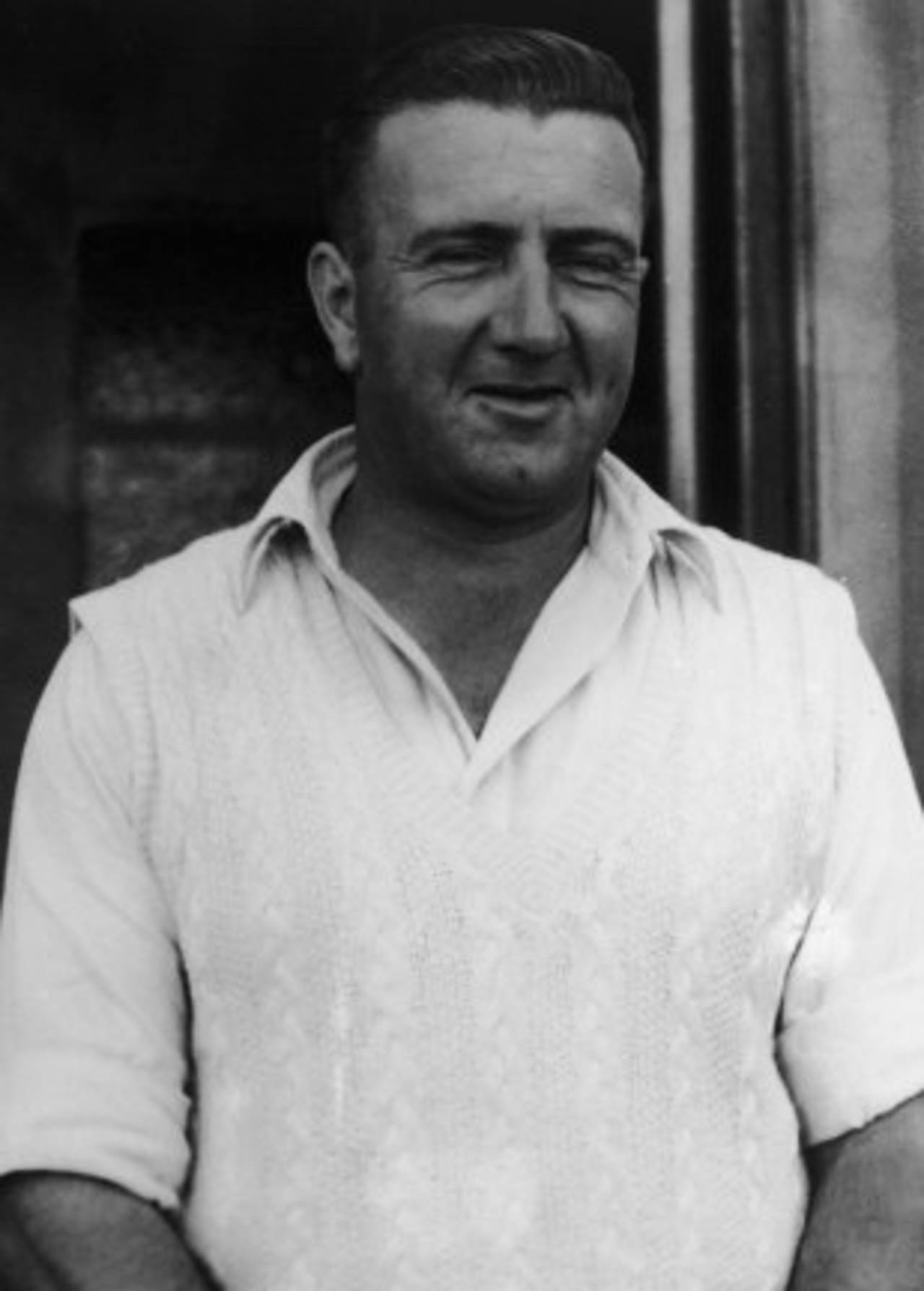Johnson's demolition, and last stands
Also, most runs in a 50th Test, most keeping dismissals without a stumping, and greatest difference between innings scores in a Test

Jack Moroney: the first man whose only two centuries came in the same Test • Getty Images
Mitchell Johnson's 12 for 127 in the demolition in Centurion last week were Australia's second-best match figures in South Africa, after legspinner Clarrie Grimmett's 13 for 173 in Durban in 1935-36. Another Australian, the Sydney-born JJ Ferris, took 13 for 91 in Cape Town in 1891-92 - but he was playing for England in that game! The best match figures by any visiting bowler in South Africa are Sydney Barnes' 17 for 159 in Johannesburg in 1913-14, the second-best in all Tests behind Jim Laker's 19 for 90 in the Old Trafford Ashes Test of 1956. South Africa's best match figures at home are 13 for 192, by offspinner Hugh Tayfield against England in Johannesburg in 1956-57; their best against Australia are 10 for 116 by Charles "Buck" Llewellyn at the old Wanderers ground in Johannesburg in 1902-03.
Clint McKay only needed to score two runs in that amazing last-wicket partnership with James Faulkner that spirited Australia to yet another victory over England at the Gabba last month. There has been only one higher tenth-wicket partnership to win a one-day international, and it came during the first World Cup, in 1975, when West Indies somehow overcame Pakistan at Edgbaston. Chasing 267, they were 203 for 9 when last man Andy Roberts joined wicketkeeper (and No. 8) Deryck Murray. Playing sensibly, they inched their way towards the target, and in the last of the 60 overs Roberts nudged the single that gave them victory after an unbeaten last-wicket stand of 64. Their partnership, though, took around 15 overs, compared to less than six for Faulkner and McKay. I am indebted to the statistician Andrew Samson for pointing out that there have been four higher successful tenth-wicket stands in all List A matches, including one of over 100 - in February 2006, North West's wicketkeeper and No. 9 Thando Bula (76 not out) and last man Friedel de Wet (56 not out) put on 102 without being parted to conjure victory over Free State in Potchefstroom in the South African Airways Provincial One-Day Challenge.
The Australian opener Jack Moroney was the first man whose only two centuries came in the same Test (against South Africa in Johannesburg in 1949-50). Since then this dubious distinction has been achieved just twice, both by Pakistan batsmen. Wajahatullah Wasti played only six Tests, but made two hundreds in his second one, against Sri Lanka in Lahore in March 1999. And on his Test debut, against Bangladesh in Karachi in August 2003, Yasir Hameed scored 170 and 105. Neither of them scored another Test century. This list contains one current player, who may yet remove himself from it: Peter Fulton's two Test centuries for New Zealand to date both came against England in Auckland last March.
Ricky Ponting scored 263 runs (120 and 143 not out) in his 100th Test, for Australia against South Africa in Sydney in January 2006. The only other man to score more than 200 runs in his 100th Test was Inzamam-ul-Haq, with 215 (184 and 31 not out) for Pakistan against India in Bangalore in March 2005. The most runs by a player in his 50th Test is 317, by Chris Gayle in one innings for West Indies against South Africa in St John's in 2004-05. Tillakaratne Dilshan, with 162 and 143 for Sri Lanka against Bangladesh, in Chittagong in January 2009, also scored more than 300 runs in his 50th Test. Dilshan is the only man to score twin hundreds in his 50th match: 30 other players have marked their 50th Test with a century.
As of day four of the second Test against India, BJ Watling has made 53 catches as New Zealand's designated wicketkeeper, without a stumping yet. That is the current record for a full career, although obviously he may yet escape from the list. Australia's Wayne Phillips kept wicket in 18 Tests, taking 43 catches but no stumpings, and next comes Hashan Tillakaratne, whose 32 dismissals in 11 Tests behind the stumps for Sri Lanka were all catches. The record for most catches before making a stumping in Tests is held by Dave Richardson, the South African keeper who is now the ICC's chief executive. He had taken 119 before finally pulling off a stumping, in his 33rd Test, to dismiss India's Venkatesh Prasad off Paul Adams in Cape Town in January 1997. Richardson was rather relieved, as he thought if he'd never made any stumpings at all people might have thought he was a slip fielder and not a wicketkeeper.
The biggest difference between a side's two totals in the same Test is 577, by England - 849 and 272 for 9 declared - against West Indies in Kingston in 1929-30. Pakistan followed on after being all out for 106 against West Indies in Bridgetown in January 1958, and made 657 for 8 declared - mainly thanks to Hanif Mohammad's epic 337 - a difference of 551. This considers only innings in which at least eight wickets fell - the biggest disparity overall without that qualification is 657, by Australia (729 for 6 declared and 72 for 3) against England at Lord's in 1930. If you insist on both innings being all out, then the answer is 456 runs, by West Indies (590 and 134) against India in Mumbai in November 2011. New Zealand in that recent Test against India in Auckland provided the seventh-highest difference where both innings were all out.
Steven Lynch is the editor of the Wisden Guide to International Cricket 2013. Ask Steven is now on Facebook